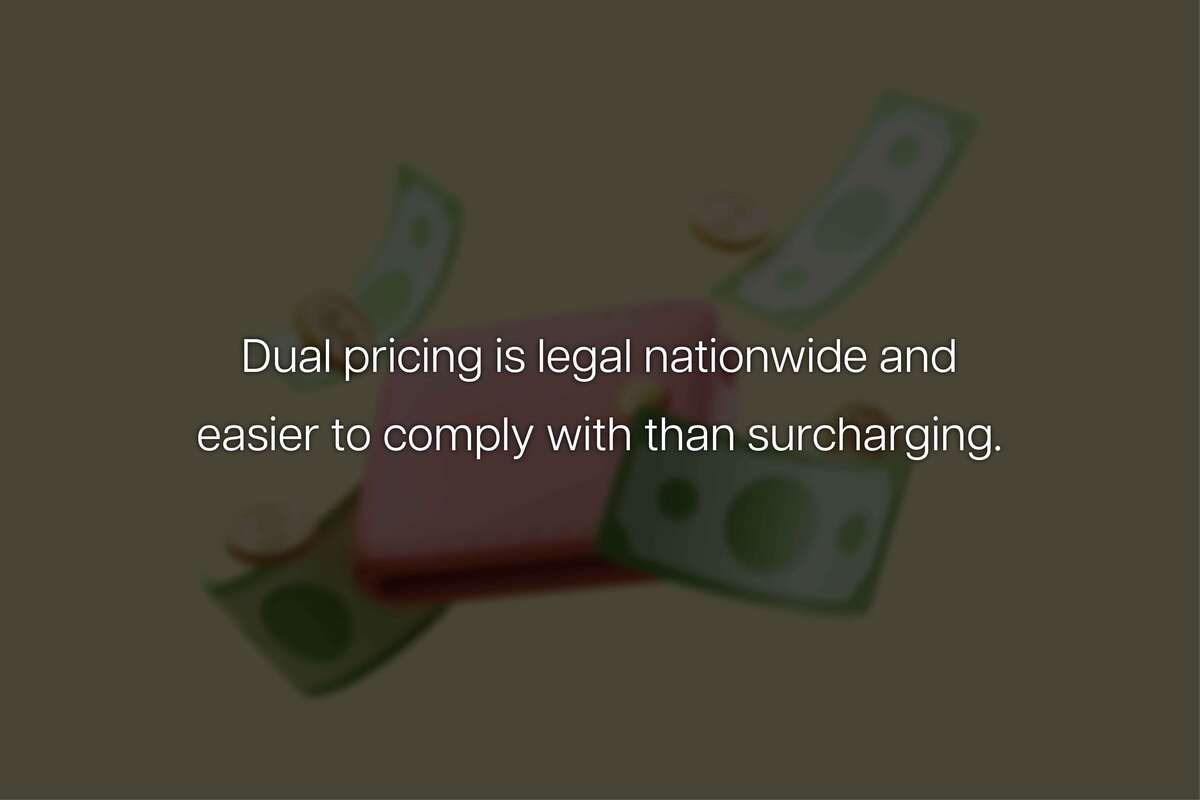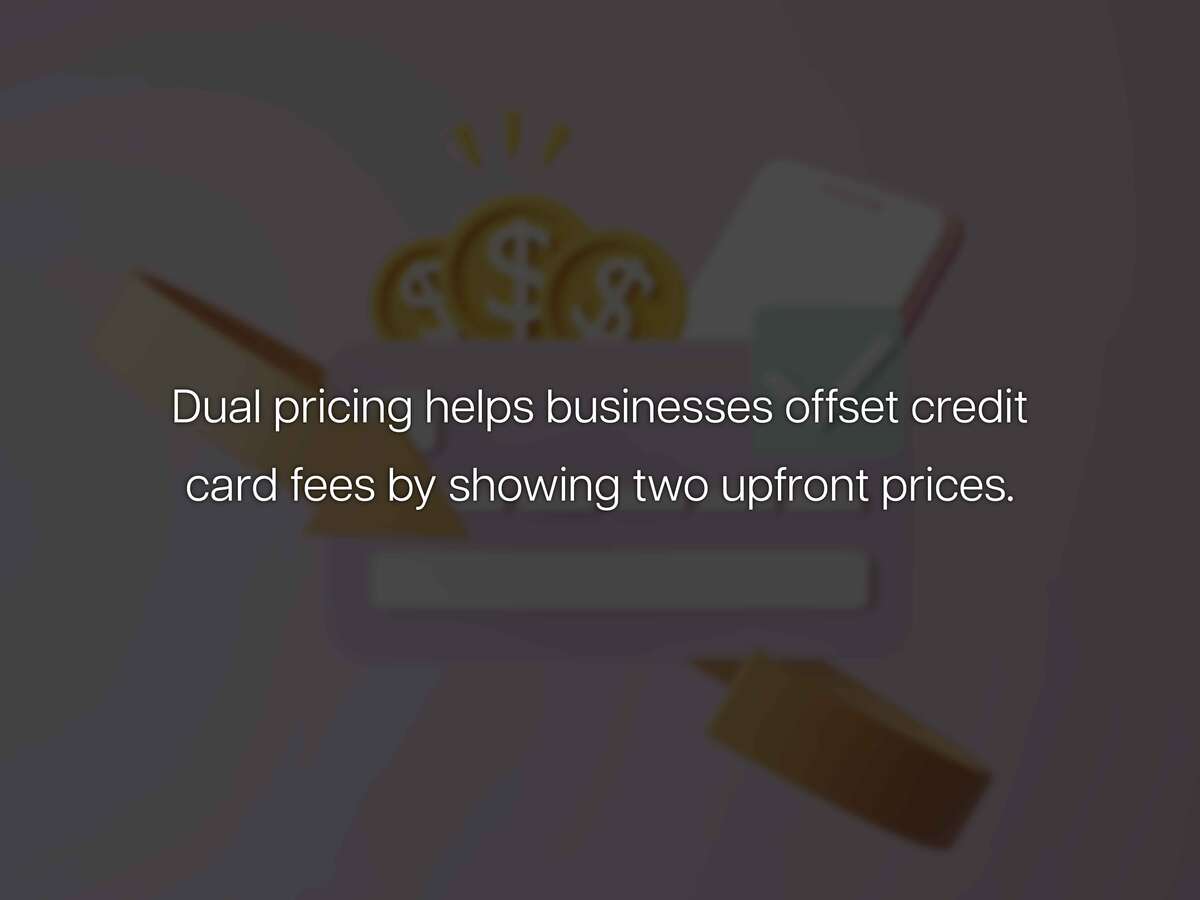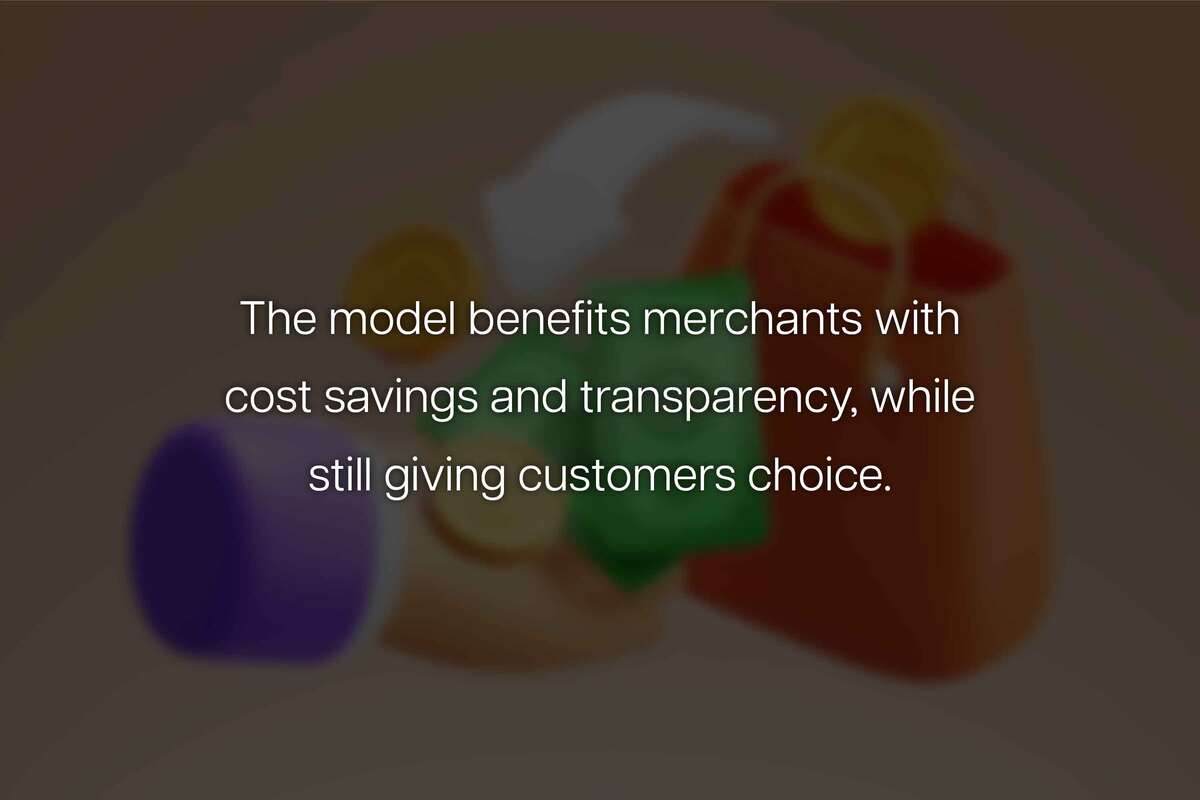What Is Dual Pricing Credit Card Processing
Dual pricing is a credit card processing strategy that allows merchants to offer two different prices for the same product or service—one for cash payments and one for card payments. This model helps businesses reduce the burden of credit card processing fees by transparently passing the cost to the consumer.

No hidden fees. Ever.
Real-time accounting
SOC 1 & SOC 2 compliance
Expert human support

Table of Contents
Dual pricing is a credit card processing strategy that allows merchants to offer two different prices for the same product or service—one for cash payments and one for card payments. This model helps businesses reduce the burden of credit card processing fees by transparently passing the cost to the consumer.
How Does Dual Pricing Work?
Dual pricing works by listing two prices for every item or service: a cash price and a credit card price. When a customer chooses to pay by credit card, they agree to pay the slightly higher price, which reflects the processing fees the merchant would otherwise absorb.
For example, a sandwich shop might list a sub as:
- Cash: $8.00
- Card: $8.30
This method is not a surcharge. It involves setting two visible prices up front, allowing the customer to choose their preferred payment method with full transparency.

Why Are Businesses Using Dual Pricing?
Businesses use dual pricing to offset the rising costs of card processing without cutting into profit margins. Traditional processing fees can range from 1.5% to 3.5% per transaction. For businesses with tight margins, these fees quickly erode revenue.
By using dual pricing:
- The merchant avoids absorbing card processing costs
- Customers are incentivized to pay with cash
- Pricing remains transparent and compliant with many state laws
Is Dual Pricing Legal?
Dual pricing is legal in all 50 U.S. states, but it must be implemented properly. Unlike credit card surcharging, which is banned or restricted in several states, dual pricing displays both the cash and card prices before the sale is finalized.
Key legal requirements include:
- Clearly displayed pricing: Both prices must be shown on menus, labels, or displays.
- No fee at checkout: The card price must be listed ahead of time, not added afterward.
- No favoritism: Merchants must allow customers to choose either method freely.

How Is Dual Pricing Different from Surcharging?
Dual pricing and surcharging both address processing fees, but they are implemented differently. Surcharging adds a fee at checkout for using a card. Dual pricing shows two options before the customer chooses how to pay.
Here's how they differ:
FeatureDual PricingSurchargingDisplayed PricingTwo visible pricesSingle price + fee at checkoutLegal in All StatesYesNoCustomer PerceptionTransparentOften viewed as sneakyCompliance BurdenLowerHigher (must follow card brand rules)
What Types of Businesses Use Dual Pricing?
Dual pricing is especially popular with small and midsize businesses where transaction fees represent a larger portion of the total sale.
Industries frequently using dual pricing include:
- Restaurants and cafes
- Convenience stores
- Gas stations
- Retail boutiques
- Auto repair shops
These businesses often operate on tight margins and benefit from cash-based incentives without alienating card users.
Benefits of Dual Pricing for Merchants
Dual pricing provides clear financial and operational advantages for business owners. Here are the key benefits:
- Cost savings: Reduce or eliminate monthly credit card fees
- Customer transparency: Avoid surprise fees at checkout
- Encourages cash payments: Helps maintain better cash flow
- Compliance: Easier to manage across jurisdictions
- Improved margins: Retain more revenue per sale
This approach also positions businesses to better handle inflation or market fluctuations by maintaining pricing control.

Does Dual Pricing Affect Customers?
Customers have a choice. Those who want to avoid paying the card price can opt for cash. Others who prioritize convenience may willingly accept the higher price. As long as both prices are clearly displayed, dual pricing does not create confusion or resentment.
Many consumers already expect pricing variances based on payment method—especially in industries like fuel or travel. The key to a smooth experience is clarity.
Implementing Dual Pricing in Your Business
If you’re considering dual pricing, take these practical steps to implement it effectively:
- Update signage and menus to include both prices
- Train staff on how to explain the pricing model clearly
- Work with a compliant payment processor that supports dual pricing setups
- Monitor feedback from customers to ensure transparency is upheld
- Keep cash-handling procedures secure and streamlined
Key elements for success include:
- Clean receipts that reflect both prices
- A consistent display of dual pricing across your business
- A system that automatically calculates the appropriate amount at checkout
Are There Downsides to Dual Pricing?
Like any pricing model, dual pricing has trade-offs. Some customers may be turned off by the higher card price and choose to shop elsewhere. Others may simply overlook the distinction and question the cost difference later.
Challenges may include:
- Educating staff and customers
- Updating POS systems
- Managing cash safely
However, these can be addressed with clear communication, automation tools, and customer-centric signage.
Is Dual Pricing Right for Your Business?
Dual pricing works best for businesses with significant credit card volume and slim margins. If you operate in a market where cash is still commonly used, dual pricing can reduce costs without harming customer satisfaction.
Businesses already paying over 2.5% in processing fees may benefit the most. However, every business should weigh customer preferences, local laws, and the competitive landscape.
Summary
Dual pricing credit card processing allows businesses to list both a cash and card price for every item or service. It offers a legal, transparent way to offset credit card processing fees while giving customers the choice of how to pay. With proper implementation and clear communication, it can significantly improve profit margins without alienating card users.
Supercharge your Payments
RevitPay is here to help you scale smarter — from your 1st transaction to your 100,000th.
Previous
Next
Frequently Asked Questions
Recent Articles
A Seamless Start to Smarter Payment Processing
Request an Application
Submit for Approval
Start Processing
Explore More Online Payment Solutions
Everything you need to process payments wherever, whenever.
Seamless & Secure Payment Processing
Payment Methods That Power High Risk Businesses
We offer a wide range of secure, flexible payment methods tailored to the needs of high risk merchants. From credit card processing and mobile payments to ACH, eCheck, and more, our solutions are built to help your business accept payments confidently.
Credit Cards
Fast, familiar, and essential.
Give your customers the convenience of paying by credit card while maintaining the fraud protection and flexibility high risk merchants need.
Mobile Payments
Payments on the go.
Whether in-store or remote, accept transactions via smartphones and tablets, keeping your business agile and responsive.
Bitcoin & Crypto Payments
Stay ahead of the curve.
Expand your payment options to bypass traditional banking barriers and get paid faster—with global reach and fewer limitations.
MOTO Payments
Mail and telephone orders made easy.
Process card-not-present transactions securely with MOTO functionality, ideal for businesses that take payments by phone or through manual orders.
ACH Payments
Lower fees, higher reliability.
Automated Clearing House (ACH) payments are perfect for recurring billing or high-ticket items, offering a secure, bank-to-bank alternative to cards.
eCheck Payments
Modernize check payments.
Accept digital checks with ease, streamlining your processing while reducing risk and delays often associated with traditional paper checks.
Seamless Continuity Billing for Subscription-Based Businesses
Looking to support subscription models? Our Continuity Subscriptions solution offers automated recurring billing, built-in autobill features, and reduced payment churn—perfect for businesses that rely on predictable revenue.

Find the Right Way to Get Paid
Whether you’re running an online store, accepting payments remotely, or operating in a high risk space, RevitPay gives you the tools to process transactions with confidence and ease.
A Seamless Start to Smarter Payment Processing
Request an Application
Submit for Approval
Start Processing
Ready to get started?
Join businesses who are saving thousands each year with RevitPay.




%20and%20How%20Does%20It%20Impact%20Online%20Security.jpg)